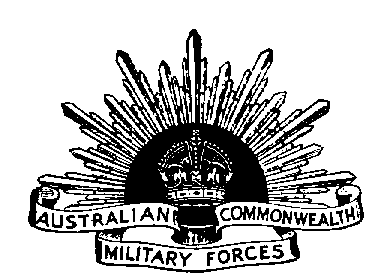


ART03356 Rodway, Florence, Brigadier General Henry MacLaurin (1922), oil on canvas, 76.2 x 63.4 cm, AWM copyright
Henry Norman MacLaurin was born in Sydney on 31 October 1878, the fourth son of Dr Charles MacLaurin, a medical doctor and chancellor of the University of Sydney. He was educated at Blair Lodge School, Polmont, Scotland, at Sydney Grammar, and at the University of Sydney, graduating with a Bachelor of Arts (BA) degree. MacLaurin was later admitted to the bar in New South Wales and became a barrister.
MacLaurin enlisted in the New South Wales Scottish Rifles while still at university and was commissioned as a second lieutenant in 1899 and was promoted to lieutenant in 1900, captain in 1903 and major in 1908. On 1 July 1913, he took command of the 26th Infantry Regiment with the rank of lieutenant colonel.
On 15 August 1915, MacLaurin was appointed to the AIF as a full colonel and given command of the 1st Infantry Brigade. The official historian described MacLaurin as "a man of lofty ideals, direct, determined, with a certain inherited Scottish dourness rather unusual in a young Australian, but an educated man of action of the finest type that the Australian universities produce. He felt that he was young for the position, but he was ready to take any responsibility if it became his duty."
MacLaurin was by far the youngest of the three original brigade commanders of the 1st Division, and more than ten years younger than any of his four battalion commanders. For a brigade major, he was given a British regular officer on secondment in Australia, Captain F. D. Irvine of the Royal Engineers.
MacLaurin's was the last brigade to come ashore at Anzac on 25 April 1915, starting in the late morning. By this time a crisis was developing and Major General W. T. Bridges was ordering units to fill gaps almost as soon as they arrived ashore. MacLaurin's 4th Battalion, the last reserve, was committed to the fighting at Lone Pine around dusk.
On the afternoon of 27 April 1915, when a Turkish counterattack threatened, Major Irvine collected 200 stray men in Monash Valley and and was about to send them forward when the news arrived that the need for them had passed. Irvine decided to see for himself and climbed up to Steele's Post, where he stood observing from a position exposed at the time from the rear to Turkish snipers who had infiltrated Russell's Top. Several men of the 3rd Battalion warned him that he would be sniped at. "It's my business to be shot at", he told them. And a moment later he was. Fatally.
Less than ten minutes later and 200 metres away, MacLaurin was standing in his shirtsleeves on the slopes of the ridge that bears his name. Unaware of Irvine's fate, MacLaurin was in the act of warning soldiers to keep under cover when he too was shot dead, from the same point, possibly by the very same Turkish sniper.
MacLaurin was buried by his men near where he fell in a grave marked with a simple wooden cross. In 1919, his remains were moved to the 4th Battalion Parade Ground Cemetery, on the slopes of Braund's Hill. For his services at Gallipoli he was mentioned in dispatches. Some weeks after his death, brigade commanders were upgraded from colonels to brigadier generals and MacLaurin was posthumously promoted to brigadier general.

Sources: Bean, C. E. W., The Official History of Australia in the War of 1914-1918. Volume I: The Story of Anzac pp.
50-51, 520-521; Phil Taylor and Pam Cupper, Gallipoli: A Battlefield Guide, pp. 185-186Page created by Ross
Mallett
ross@metva.com.au
Last update 02 September 2001